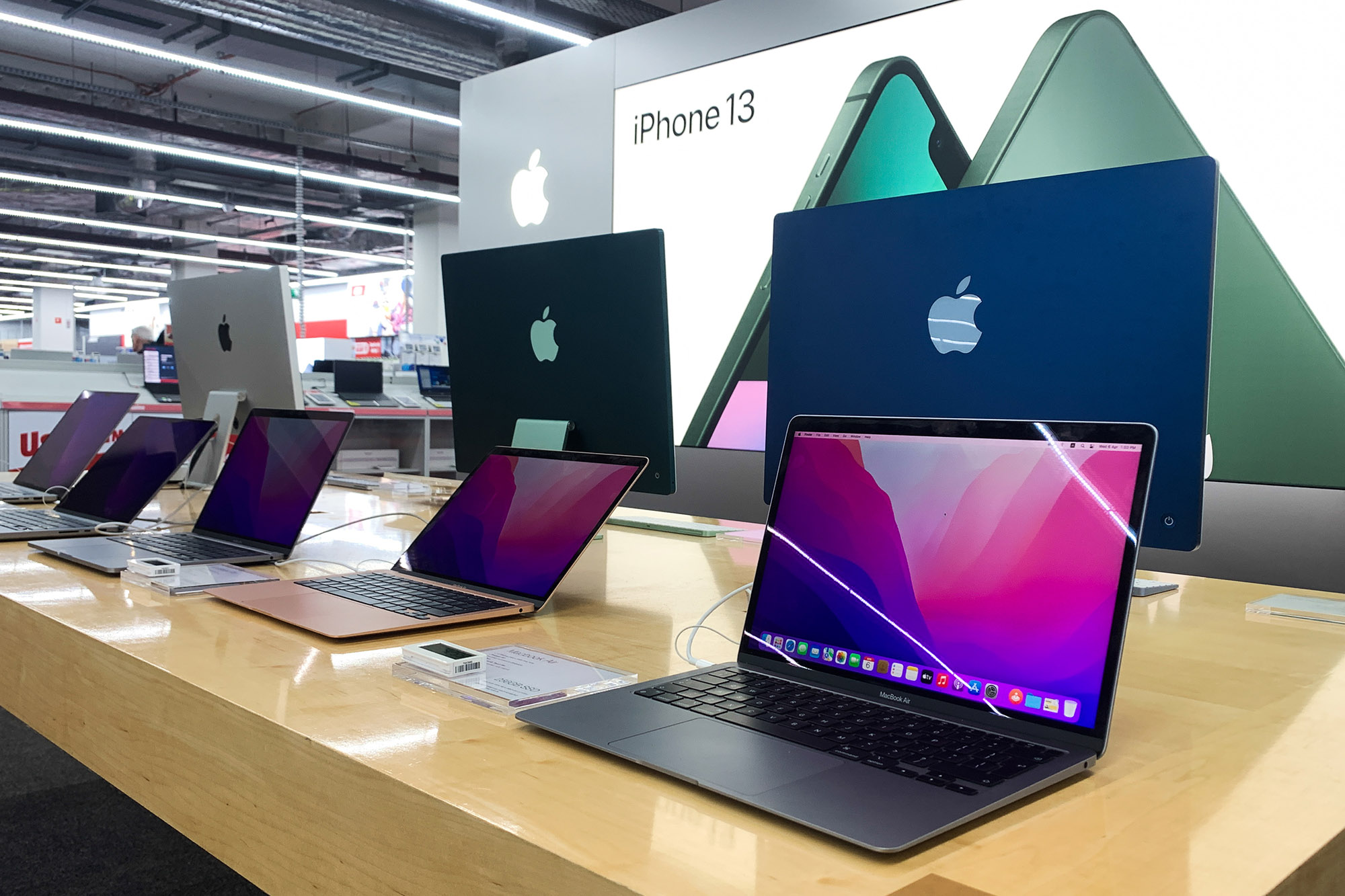

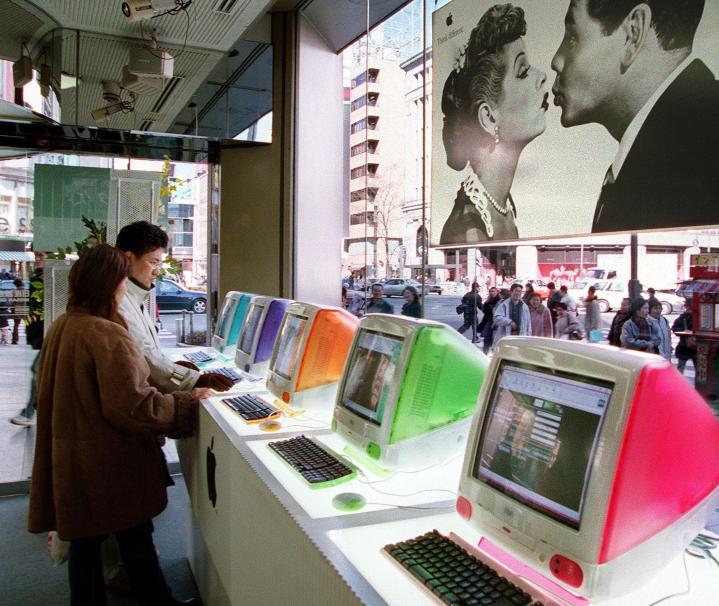
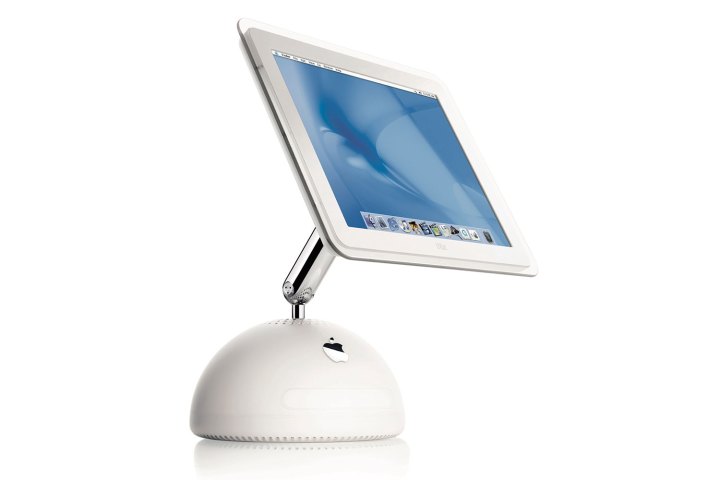

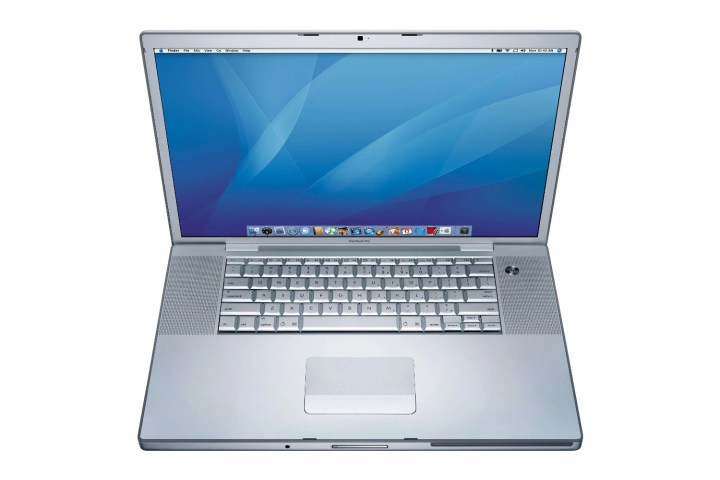

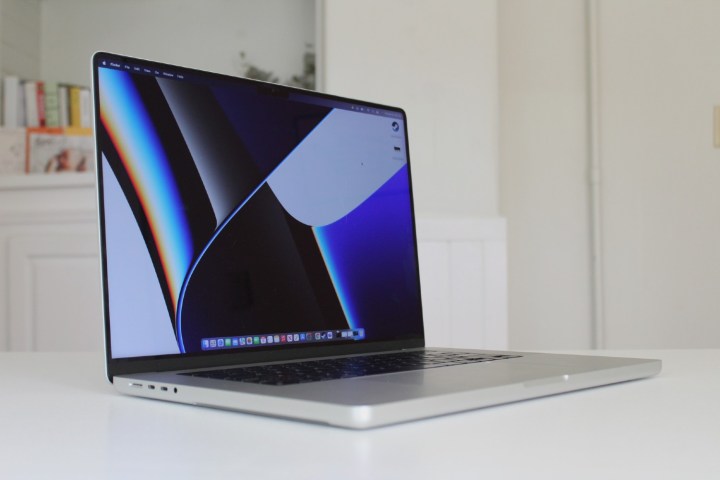
Apple has been in the computer business since the very beginning. Over the years there have been some absolute classics, going right back to the company’s first product, the Apple I, in 1976.
Yet it was with the Macintosh line that Apple’s computers really found their feet. They’ve been so successful that these days the best Macs are synonymous with quality, durability, and performance. But even with such a storied history, it’s possible to pick out a few key milestones along the way. These are the greatest hits, a list of the best Macs in history that helped propel Apple to new heights.
Macintosh 128K (1984)

Remember the Super Bowl commercial for the Macintosh 128K? You know the one. Dubbed “1984” and directed by Ridley Scott, it features a young athlete smashing an on-screen Big Brother, freeing hordes of captive onlookers from captivity and conformity. That commercial was for Apple’s Macintosh 128K, and was meant to herald a new era of computing.
That desire was not misplaced. Like the commercial itself, the Macintosh 128K was a watershed moment. Not only did it birth the Macintosh name that is still used for Apple’s computers today, but it totally changed the perception of what a computer could be.
Small and lightweight, the Macintosh 128K was a true home computer, something that could find a place in anyone’s front room. It was affordable, too, lowering the barriers to entry for people who may have shied away from the computers of the past.
And it propagated a range of features that we take for granted today. It was the first computer to popularize the computer mouse, something that had been dreamed up a decade earlier but had never broken through into the mainstream. Its operating system standardized the easy-to-use graphical user interface, with windows and desktop metaphors that competitors sought to imitate. And it showed there was an alternative to IBM, whose products had a near-monopoly on the market.
iMac G3 (1998)

When Steve Jobs returned to Apple in 1997, the company was a total mess. A flailing product strategy, years of poor management, and underwhelming sales had combined to push Apple to the brink of bankruptcy. Yet just a year later, Apple would launch a computer that not only saved the company, but would also revolutionize the entire industry.
Everything that went into the iMac showed it was different to anything done before. It came in bursts of color, a radical departure from the beige boxes that dominated at the time. Its case was translucent so you could see the insides, helping to demystify how computers worked. And it had a carry handle, not because Apple expected you to move it often, but to help overcome the fear many people had of computers and encourage them to touch it.
It was all deliberate and geared toward making the computer approachable, friendly, even fun. That would never have worked if the software was a nightmare to use, but Apple succeeded here, too. Like the Macintosh 128K that came before it, the iMac was famously easy to use.
But it wasn’t just a plaything — it was fast, too, way more so than you would expect given its innocent demeanor. And, perhaps most importantly, it made it straightforward for people to connect to the internet. It was perhaps the first mega-hit computer of the internet era, paving the way for everything that followed, and was certainly one of Jony Ive’s greatest achievements.
iMac G4 (2002)

If the iMac G3 helped Apple take the fear factor out of computing, its follow-up, the iMac G4, established the company as the king of cool. Ditching the bright colors for classy white and silver, the iMac G4 adopted the design language established by the iPod and used by Apple for years to come.
Its origin came thanks to a moment of inspiration. After the success of the iMac G3, Steve Jobs and Jony Ive were struggling to come up with a successor. During a stroll in Jobs’ garden, the epiphany came. Laurene Powell Jobs, Steve’s wife, had planted a profusion of sunflowers. Ive spotted them and excitedly began sketching: With a monitor attached to a moveable arm, the next iMac would seem to be so fluid it could reach for the sun, just like a sunflower.
Unlike the iMac G3 with its CRT display, the G4 introduced flat LCD panels to the Mac range, redefining how thin and light an Apple computer could be. Its LCD panel was a key selling point, but it also excelled when it came to ergonomics. The cantilevered monitor arm was not just pretty, it could be easily manipulated into a comfortable position for whoever was using it. And with all the components hidden in the base, it prompted stunned reactions of “where’s the computer?” from puzzled spectators.
Steve Jobs declared that the iMac G4 “has a beauty and grace that will last the next decade.” Sadly, it in fact lasted only two years before being discontinued. But its legacy has lived on as proof that Apple knew how to combine stunning design with excellent practicality and superb software.
First-generation Intel Mac Pro (2006)

When Apple relaunched the Mac Pro in 2019, it instantly drew comparisons to the 2006 Mac Pro thanks to its “cheese grater” front panel design. But aside from that unusual visage, what else made the first Mac Pro special? As it turns out, quite a lot.
A year earlier, Steve Jobs had promised that Apple would soon switch from PowerPC processors to Intel chips. This promised a huge uptick in performance, and nowhere was that clearer than with the Mac Pro. It was the first Mac to hit the 3.0GHz mark, something Jobs conceded was not possible on the old PowerPC architecture.
What’s more, Apple drove the point home by loading each Mac Pro with not one but two Intel Xeon processors. The chips were 64-bit, and increased the performance-per-watt of the machines. In fact, Apple claimed they offered double the performance of the previous Power Mac G5.
All that power was housed in a chassis that was as striking on the inside as it was on the outside. Once opened, there were no messy cables and fiddly screws. Everything was neatly compartmentalized, with drives simply slotting into place. It showed Apple understood that design was not just about how a thing looked, but how it worked — something Steve Jobs had been preaching since the days of the iMac G3.
First-generation MacBook Pro (2006)

While the 2006 Mac Pro was Apple’s most powerful computer in its early transition to Intel chips, it wasn’t the first. That honor goes to the 2006 MacBook Pro. And it was such a leap forward that it truly earned the “Pro” moniker.
Compared to the PowerBook G4 that came before it, the MacBook Pro offered up to four times the performance thanks to the Intel Core Duo, the first dual-core processor in a Mac. It did that while occupying a thinner, lighter aluminum chassis, and its display was two-thirds brighter than the PowerBook, starting a trend for brilliantly bright MacBook Pro screens that continues to this day.
It was also the first Mac to introduce the beloved MagSafe, which has made a welcome return in recent years. And at the top of the display was the first built-in iSight webcam, something that the PowerBook G4 totally lacked.
The transition to Intel processors resulted in a monumental jump in performance for Apple’s Macs, and one of the places this was most apparent was the first MacBook Pro. It was so significant that it prompted a name change that’s still with us all these years later.
First-generation MacBook Air (2008)

We all know Steve Jobs was a master at the keynote presentation, but nowhere was that more apparent that at his iconic unveiling of the first-generation MacBook Air in 2008. After explaining just how thin and light the device was, Jobs then strolled over to a side table and pulled a MacBook Air out of a manilla envelope, to cheers and disbelief from the audience.
But this wasn’t just bluster. The MacBook Air was like nothing we’d ever seen before. Jobs explained Apple set out to do several things: Make a laptop that was thinner than the competition, yet was more powerful, had a better display, and a better keyboard. And boy, did the MacBook Air achieve that.
At its thickest point, the MacBook Air was thinner than the thinnest point on the world’s previous slimmest laptop — that’s how incredible Apple’s feat of engineering was. Unlike rival devices, it came with a larger 13-inch display and a full-size keyboard. And it had a full-power processor that destroyed the competition.
It was so unprecedented, it elicited stunned gasps from Jobs’ audience on several occasions. Its achievement was that it showed it was possible to build an ultra-thin laptop without the compromises other companies were forced to make.
M1 MacBook Pro (2020)

The transition to Intel processors may have brought enormous gains in 2006, but nearly 15 years later Intel’s chips were becoming more of a hindrance than a help to Apple’s Macs. They ran too hot for Apple’s slimline aspirations, and didn’t run nearly fast enough either. Something had to change.
That something was a complete transition to Apple’s own chips, and it utterly revitalized the Mac lineup. No longer did Macs seems like overpriced underperformers — if anything, they were absolute bargains with the power and efficiency of Apple silicon. The M1 MacBook Air was a great example of this, and yet, it’s the MacBook Pro 14-inch and 16-inch that make the list here.
After all, no one had doubts Apple couldn’t replicate the capabilities of an ultra-thin laptop like the MacBook Air. But to replace the performance of a high-wattage CPU and discrete graphics? Now that was a challenge many of us were skeptical of.
And yet, Apple totally pulled it off. The redesigned chassis brought back beloved features like MagSafe and extra ports, while the performance of the M1 Pro and M1 Max were doing things no one had seen before in a laptop of this class.
Yet what was even more amazing was that the MacBook Pro managed to do this while seriously increasing the battery life, something it continues to run circles around its competitors with. If nothing else, these MacBook Pros were proof that Apple’s move to its own silicon was going to pay off in the long run, and in many ways, it’s only just begun.
Digital Trend, New tech, tech news, wikiHow

No comments:
Post a Comment